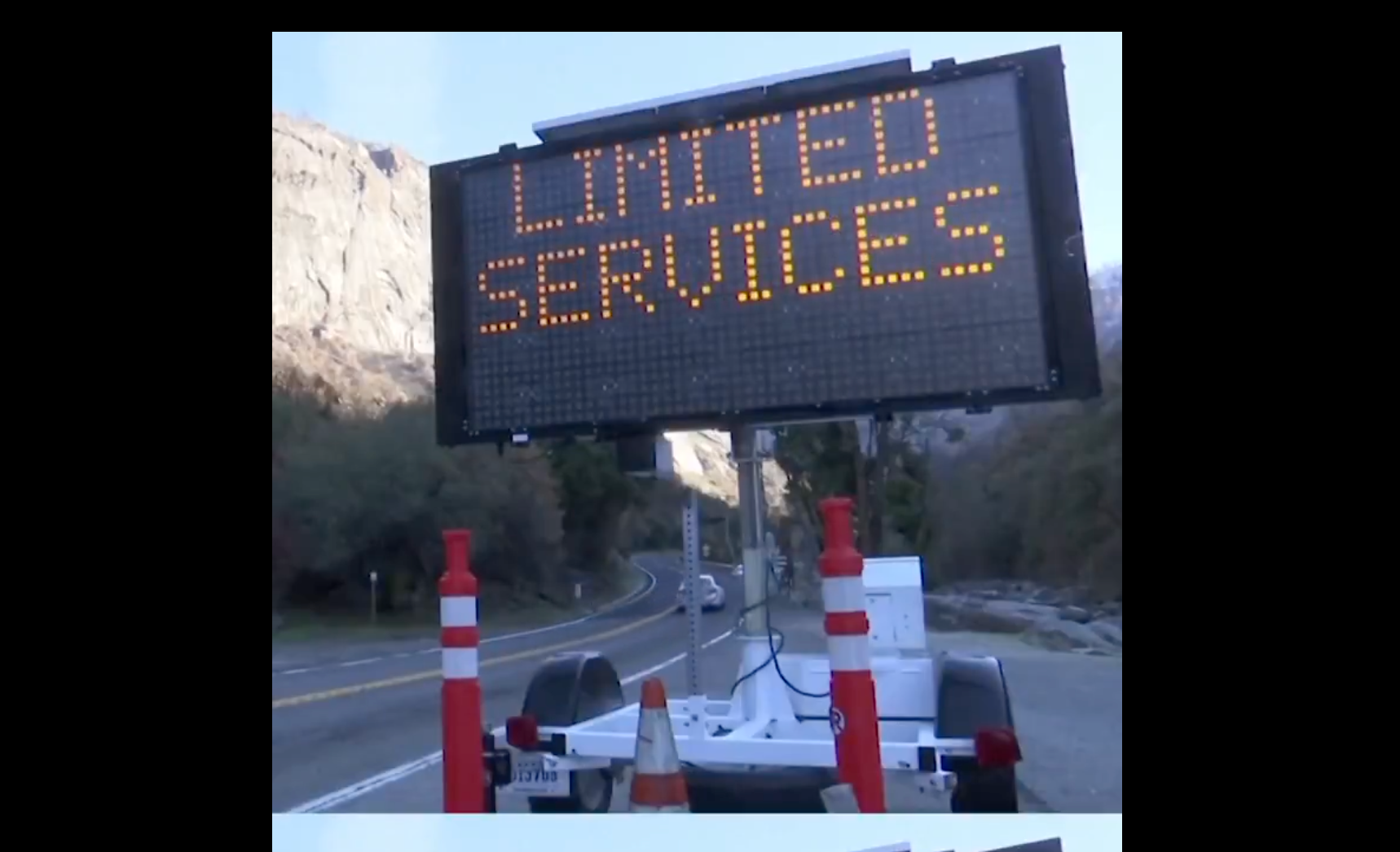
WASHINGTON (AP) — Washington is bracing for what could be a prolonged federal shutdown after lawmakers deadlocked and missed the deadline for funding the government.
Republicans supported a short-term measure to fund the government generally at current levels through Nov. 21, but Democrats blocked it, insisting the measure address their concerns on health care. They want to reverse the Medicaid cuts in President Donald Trump’s mega-bill passed this summer and extend tax credits that make health insurance premiums more affordable for millions of people who purchase through the marketplaces established by the Affordable Care Act.
Republicans called the Democratic proposal a nonstarter that would cost taxpayers more than $1 trillion.
Neither side shows any signs of budging.
Here’s what to know about the shutdown that began Wednesday:
What happens in the shutdown?
Now that a lapse in funding has occurred, the law requires agencies to furlough their “non-excepted” employees. Excepted employees, who include those who work to protect life and property, stay on the job but don’t get paid until after the shutdown ends.
The White House Office of Management and Budget begins the process with instructions to agencies that a lapse in appropriations has occurred and they should initiate orderly shutdown activities. That memo went out Tuesday evening.
The Congressional Budget Office estimates roughly 750,000 federal employees could be furloughed each day of the shutdown, with the total daily cost of their compensation at roughly $400 million.

What government work continues during a shutdown?
A great deal, actually.
FBI investigators, CIA officers, air traffic controllers and agents operating airport checkpoints keep working. So do members of the Armed Forces.
Those programs that rely on mandatory spending generally continue during a shutdown. Social Security payments still go out. Seniors relying on Medicare coverage can still see their doctors and health care providers can be reimbursed.
Veteran health care also continues during a shutdown. Veterans Affairs medical centers and outpatient clinics will be open, and VA benefits will be processed and delivered. Burials will continue at VA national cemeteries.
Will furloughed federal workers get paid?
Yes. In 2019, Congress passed a bill enshrining into law the requirement that furloughed employees get retroactive pay once operations resume.
While they’ll eventually get paid, the furloughed workers and those who remain on the job may have to go without one or more of their regular paychecks, depending upon how long the shutdown lasts.
Service members would also receive back pay for missed paychecks once federal funding resumes.
Will I still get mail?
Yes. The U.S. Postal Service is unaffected by a government shutdown. It’s an independent entity funded through the sale of its products and services, not by tax dollars.
What closes during a shutdown?
All administrations get some leeway to choose which services to freeze or maintain in a shutdown.
The first Trump administration worked to blunt the impact of what became the country’s longest partial shutdown in 2018 and 2019. But on Tuesday, Trump threatened the possibility of increasing the pain that comes with a shutdown.
“We can do things during the shutdown that are irreversible, that are bad for them and irreversible by them,” Trump said of Democrats. “Like cutting vast numbers of people out, cutting things that they like, cutting programs that they like.”
Each federal agency develops its own shutdown plan. The plans outline which workers would stay on the job during a shutdown and which would be furloughed.
In a provocative move, the Office of Management and Budget has threatened the mass firing of federal workers in a shutdown. An OMB memo said those programs that didn’t get funding through Trump’s mega-bill this summer would bear the brunt of a shutdown.
Agencies should consider issuing reduction-in-force notices for those programs whose funding expires, that don’t have alternative funding sources and are “not consistent with the President’s priorities,” the memo said.
That would be a much more aggressive step than in previous shutdowns, when furloughed federal workers returned to their jobs once the shutdown was over. A reduction in force would not only lay off employees but eliminate their positions, which would trigger another massive upheaval in a federal workforce that’s already faced major rounds of cuts due to efforts from the Department of Government Efficiency and elsewhere in Trump’s Republican administration.
What agencies are planning
— Health and Human Services will furlough about 41% of its staff out of nearly 80,000 employees, according to a contingency plan posted on its website.
As part of that plan, the Atlanta-based Centers for Disease Control and Prevention would continue to monitor disease outbreaks, while activities that will stop include research into health risks and ways to prevent illness.
Meanwhile, research and patient care at the National Institutes of Health would be upended. Patients currently enrolled in studies at the research-only hospital nicknamed the House of Hope will continue to receive care. Additional sick patients hoping for access to experimental therapies can’t enroll except in special circumstances, and no new studies will begin.
At the Food and Drug Administration, its “ability to protect and promote public health and safety would be significantly impacted, with many activities delayed or paused.” For example, the agency would not accept new drug applications or medical device submissions that require payment of a user fee.
— The National Park Service plans to furlough about two-thirds of its employees while keeping parks largely open to visitors during the federal shutdown, according to a contingency plan released Tuesday night. The plan says “park roads, lookouts, trails, and open-air memorials will generally remain accessible to visitors.”
The plan also allows parks to enter into agreements with states, tribes or local governments willing to make donations to keep national park sites open. The park service has more than 400 sites, including large national parks such as Yellowstone and Grand Canyon, national battlefields and historic sites.
Sites could close if damage is being done to park resources or garbage is building up.
Many national parks including Yellowstone and Yosemite stayed open during a 35-day shutdown during Trump’s first term. Limited staffing led to vandalism, gates being pried open and other problems including an off-roader mowing down one of the namesake trees at Joshua Tree National Park in California.
— Smithsonian Institution: Museums, research centers and the National Zoo will remain open through at least Monday.
Impact on the economy
Phillip Swagel, director of the Congressional Budget Office, said a short shutdown doesn’t have a huge impact on the economy, especially since federal workers, by law, are paid retroactively. But “if a shutdown continues, then that can give rise to uncertainties about what is the role of government in our society, and what’s the financial impact on all the programs that the government funds.”
“The impact is not immediate, but over time, there is a negative impact of a shutdown on the economy,” he added.
Markets haven’t reacted strongly to past shutdowns, according to Goldman Sachs Research. At the close of the three prolonged shutdowns since the early 1990s, equity markets finished flat or up even after dipping initially.
A governmentwide shutdown would directly reduce growth by around 0.15 percentage points for each week it lasted, or about 0.2 percentage points per week once private-sector effects were included, and growth would rise by the same cumulative amount in the quarter following reopening, writes Alec Phillips, chief U.S. political economist at Goldman Sachs.
___
Associated Press writer Ali Swenson, Fatima Hussein, Matthew Brown and Annie Ma contributed to this report.





